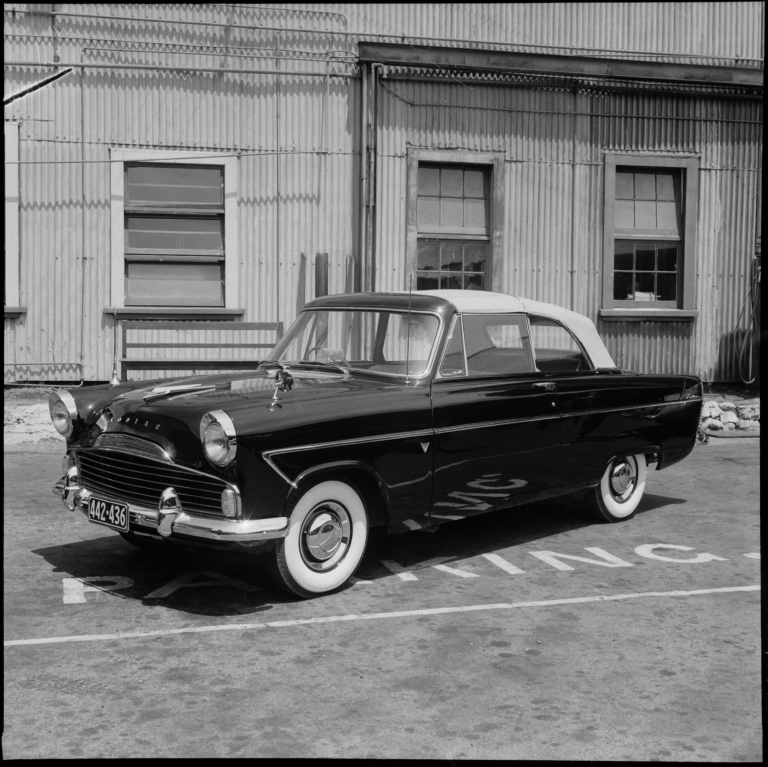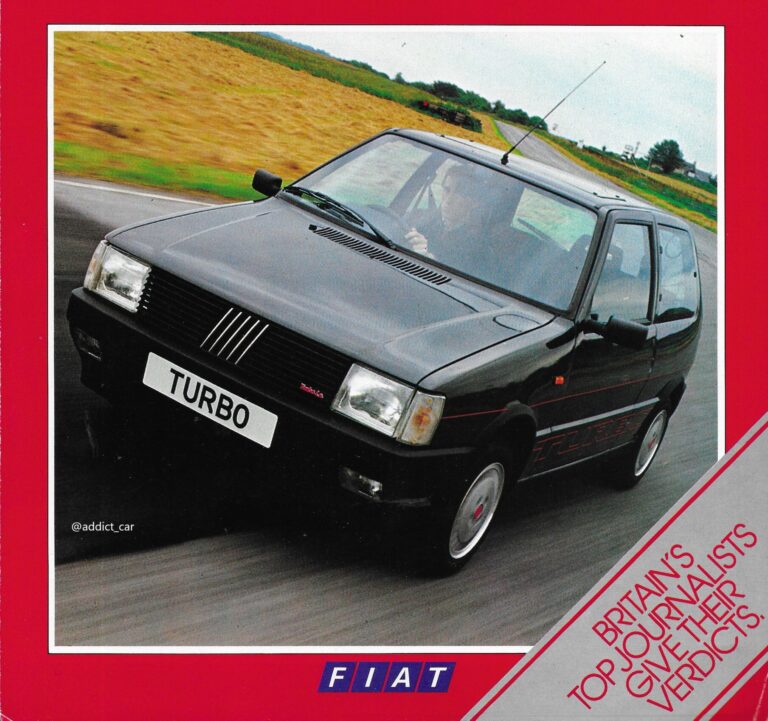One of the showcase cars at the Richardson Transport World’s upcoming ‘The Evolution of Japanese Cars’ exhibition, a rare Mazda RX-3, could exert enough gravitational force to see another museum in another city built around it
By Quinton Taylor

When Incercargill’s Transport World’s Japanese car exhibition was being planned, a Dunedin businessman and his partner readily accepted the invitation to display their rare and special Mazda RX-3 SP. The car, which had recently arrived from Florida, USA is is a left-hand drive model and one of only 1606 SP models built by Mazda. Fresh from a substantial tidy-up and respray in its original Mazda Impulse Blue colour at Cory Wilson’s Retro Automotive Mazda restorations in Dunedin, it is now only the second SP in the country.
Display trial run
The owners want to remain anonymous at this stage but they are keen to set up a permanent Mazda display in Dunedin as a drawcard for visitors to that city. “We are keen to involve the Dunedin City Council, who could perhaps set us up in a suitable display. It could be big for Dunedin, judging by the popularity of other Mazda displays overseas,” he said.
A Transport World transporter picked up five Mazdas from Cory Wilson’s workshop for the exhibition, meaning the SP’s owner has barely glimpsed it. “It’s been in New Zealand for some eight months and I’ve barely seen it, as it has been most of that time at Cory’s. I’ve basically just driven it to his workshop and that’s it.”
The five cars shipped to Invercargill included an RX-4, Mazda’s first full-production rotary-powered car the R100, and a Roadpacer — a Holden HZ body fitted with a rotary engine. The last two cars have featured in recent New Zealand Classic Car magazines.

With the addition of cars supplied by other collectors in the Otago area, the SP owners’ aim is to eventually set up a Mazda display similar to those in Hiroshima in Japan and others in Australia, Germany, and Los Angeles, USA. “We would love to go in with Cory and his mate, and together we would have 50 rotaries on display. If Dunedin Council would go with that, it would just bring in people.” The owner says the combined collection of rotary-powered Mazdas was short of just a few models, including a Series 1 Mazda Cosmo. They nearly bought one recently, which is now being restored in Cromwell for Mike Elford.
“We just missed out on that one in the bidding. It would be great to have a Cosmo in the collection eventually.”

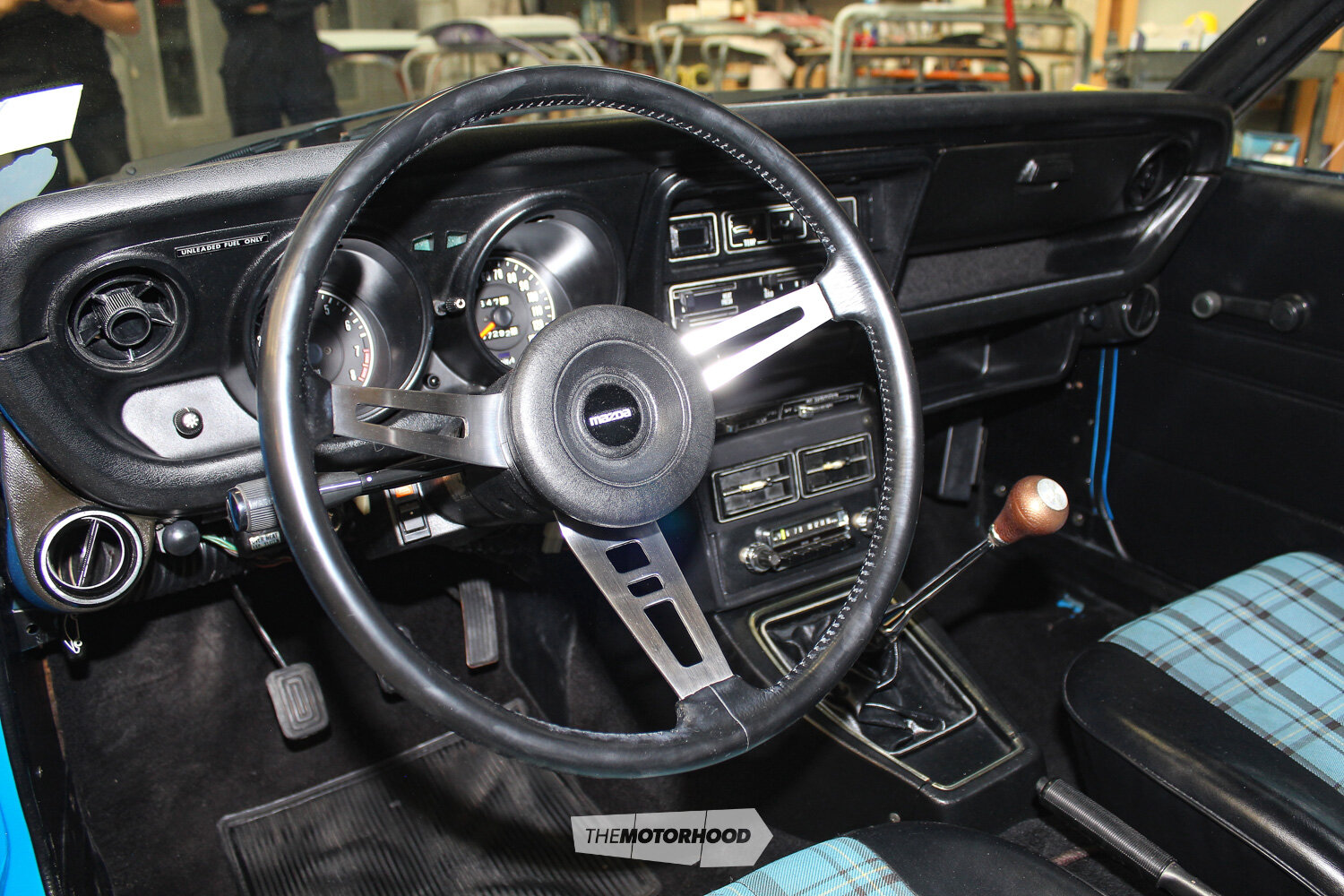
Sticker for accuracy
The RX-3 was a satisfying project for Dunedin Mazda restorer and collector Cory Wilson.
“The main task really was to freshen up the paint,” he says. “It looks like it was resprayed at one stage in America. We bare-metalled a few areas which had started to bubble or crack. It was in great shape and still had the original blue colour in the wheel arches. There was pretty much no rust in the car whatsoever as well; we simply cleaned up the interior. It’s an original interior, so basically it just needed a clean. It’s very complete.”
The 12A rotary engine was in great shape and required little attention other than checking over and tuning. Cory says the car checked out fully.
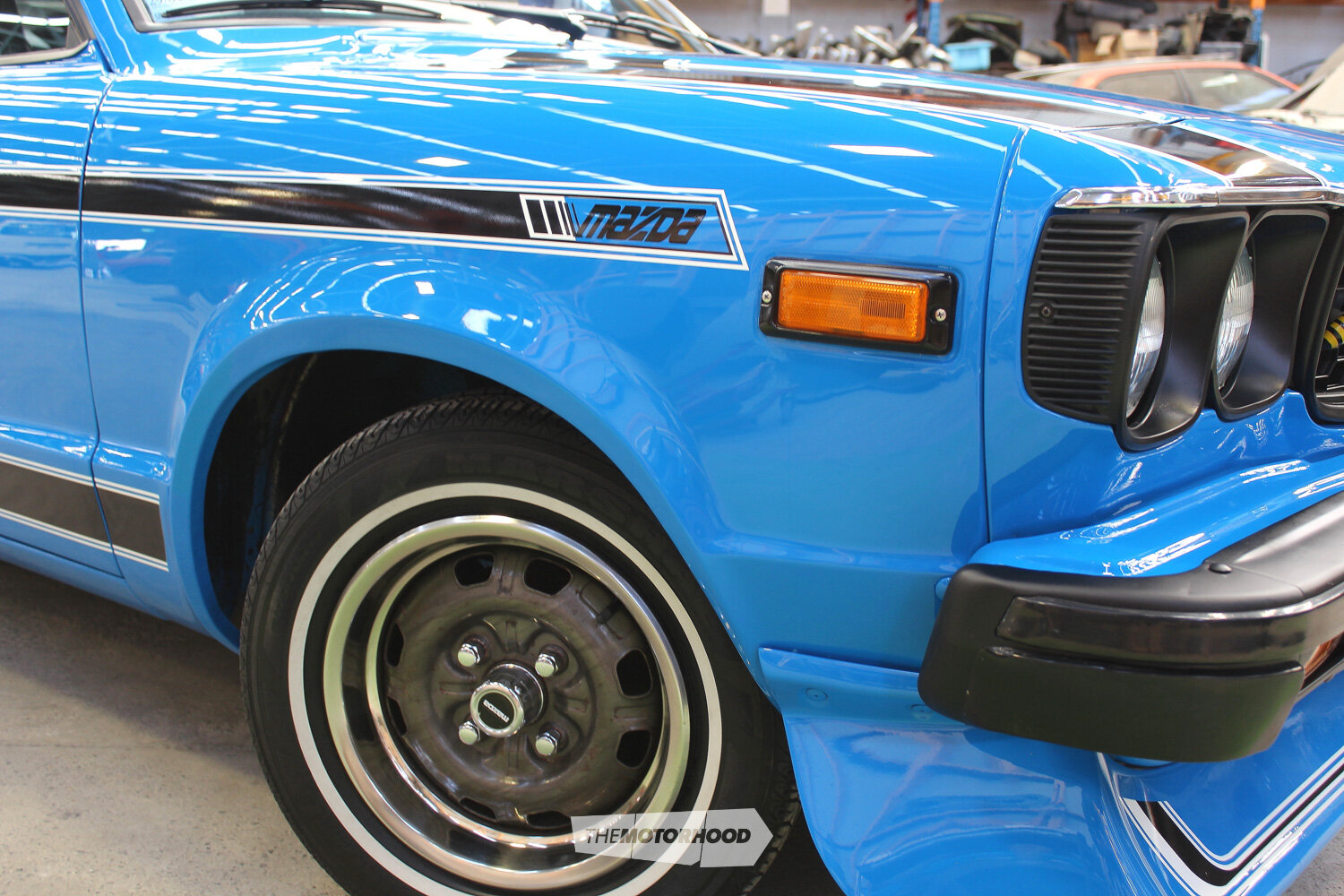
“It’s a factory 12A engine. There wasn’t one missing part. It was 100-per-cent there and 100-per-cent genuine. It was very pleasing to work on actually. We just needed to do a couple of things for compliance, such as brakes and headlights. It was in pretty good shape. It drives very nicely and it’s a very honest car. SPs are now extremely rare. It’s a 1977 car, five-speed manual gearbox with all confirming papers in the States and numbers and tags matched.”
An important piece of tidying the car involved redoing the distinctive graphics — an even rarer point on this particular car.
“220 RX-3 SPs were assembled with the sticker, louvre, and spoiler kit. However, 120 had an error with the sticker kit, as the sticker was printed the same way for both sides, meaning one side was the wrong angle (see if you can spot it). Some dealers replaced the sticker so that it was the correct one. This one still has that incorrect one on the right side,” Cory said.
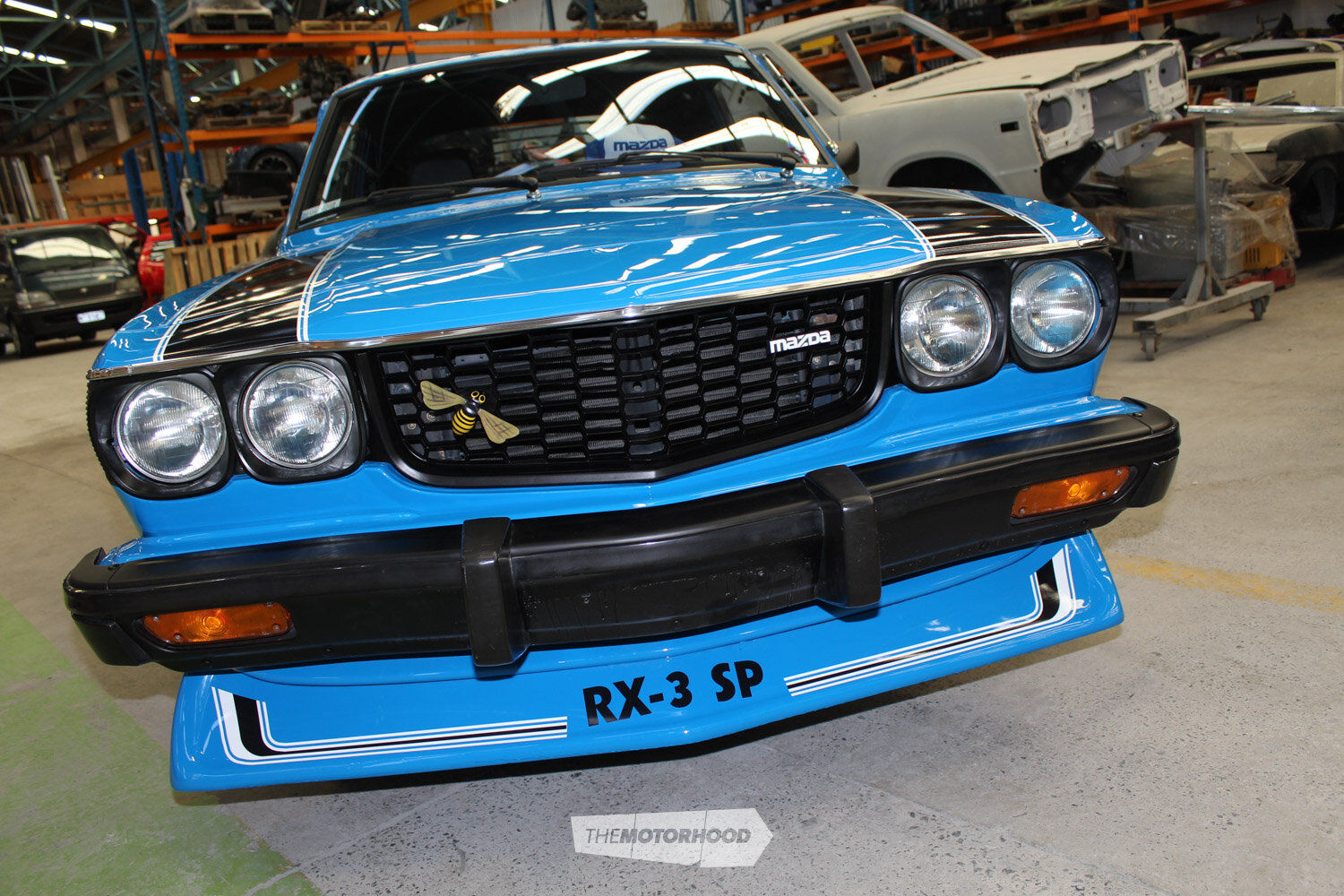
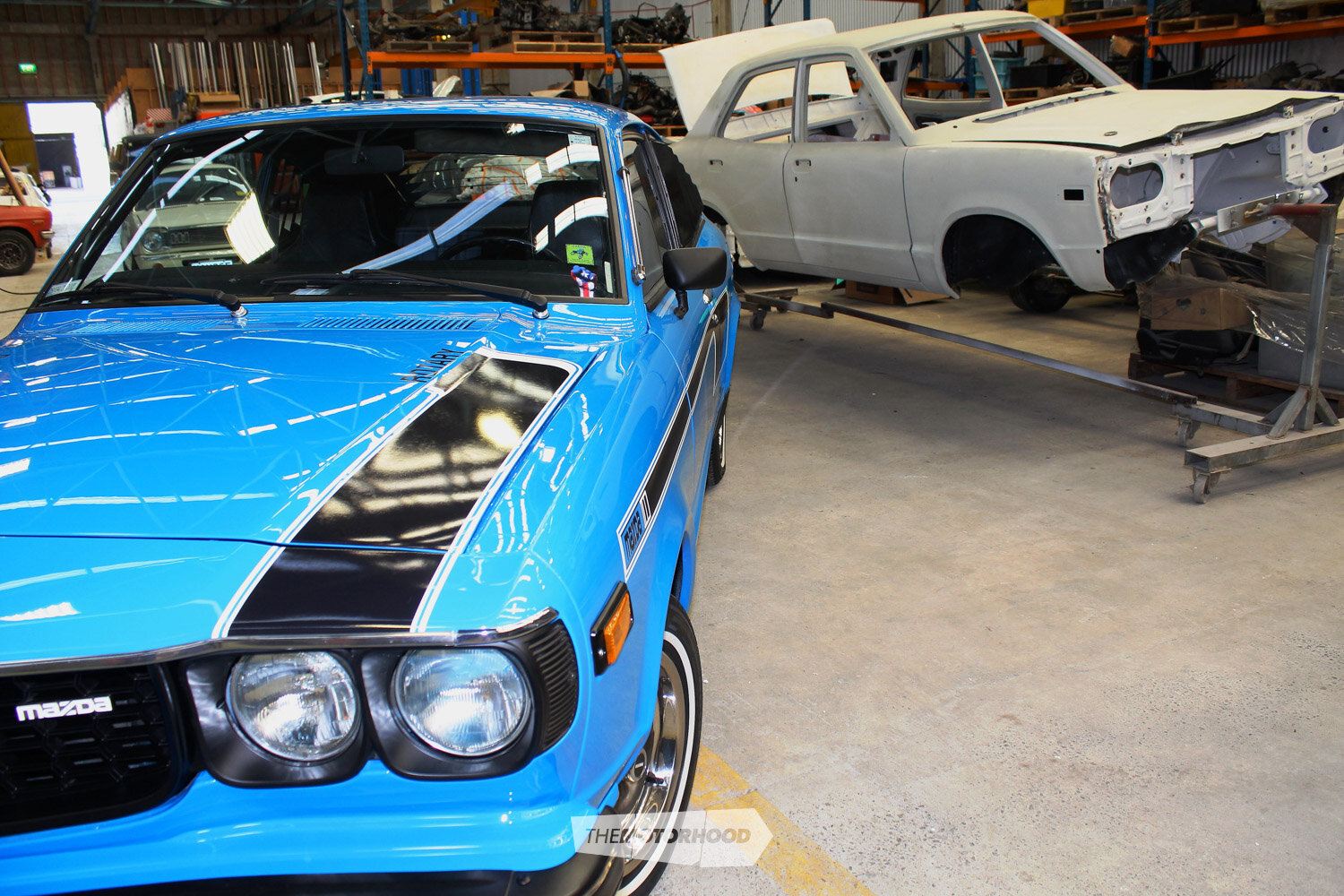
Mazda RX-3 SP — Mini muscle car
Just 1606 examples of the Mazda RX-3 SP model were made in 1977, aimed squarely at the US market. They went big on the mini-muscle-car look with prominent decals and stripes over eye-popping colours, such as the featured example’s ‘Impulse Blue’. The full dress aesthetic was completed with a prominent chin spoiler, blacked-out bumper bars, and a black rear-window louvre.
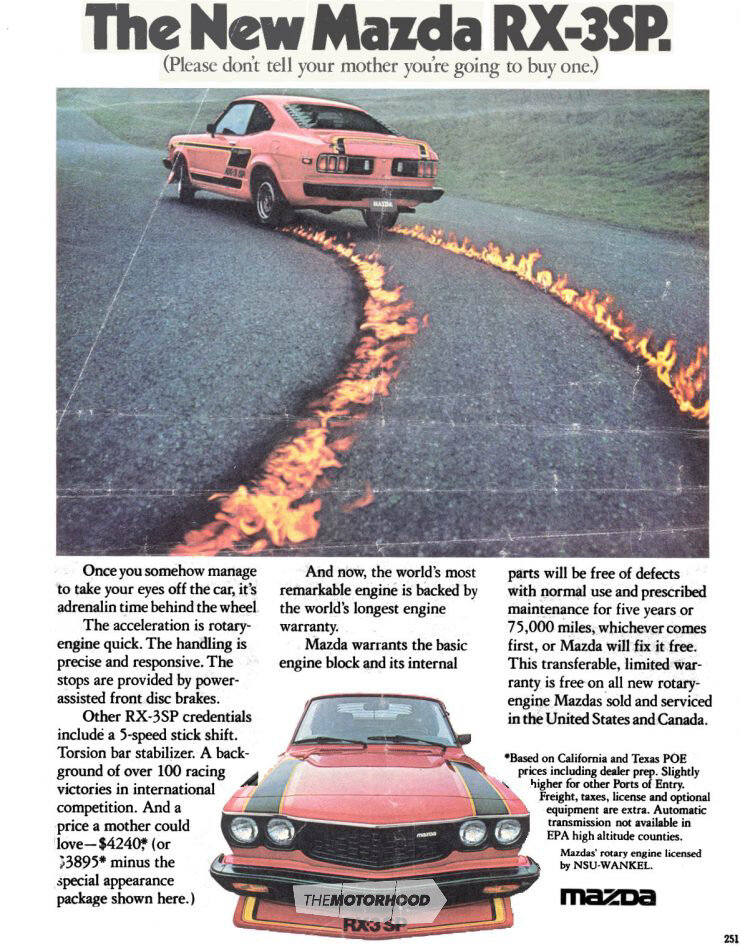
You could opt for just a plain Mazda RX-3 SP if you wished, and there was a range of brilliant pastel colours to go with the RX-3’s distinctive looks. However, Mazda commissioned Roger Chastain — of Shadow Racing Team fame — to capture a share of the market for Mustang II Cobras, Chevrolet Monza Spyders, and Pontiac Trans Ams with vivid graphics kits and add-ons.

Mazda was well prepared when the RX-3 was launched in 1973 for tough new US emission standards set to come in during 1975. Many companies had spent millions trying to solve the rotary engine’s shortcomings of reliability and prodigious thirst for fuel, but it was the small team from the innovative Mazda company which came up with a workable and reliable engine, while most other companies discontinued some very promising designs. Further development of the rotary engine was celebrated when the SP, or Special Appearance Package, was introduced to publicize Mazda’s new warranty policy of 75,000 miles for the rotary engine. Production ceased in 1978 when the RX-7 was introduced.
For the RX-3 SP, Mazda used the standard 12A rotary engine, alongside a four- or five-speed manual or a three-speed automatic transmission. It also featured a limited-slip differential, four-wheel disc brakes, and slightly lowered suspension. The little coupe was a road rocket.
Following on from the Cosmo and R100, the RX-3 enjoyed considerable success on the racetrack and was a popular choice for rallying. While new models are thin on the ground, Mazda engineers have not abandoned the rotary engine design. Its high-revving, high-power nature and compact size makes it well suited to charging electric drivetrains as a range extender, and it’s in this guise that it still features in Mazda’s plans.
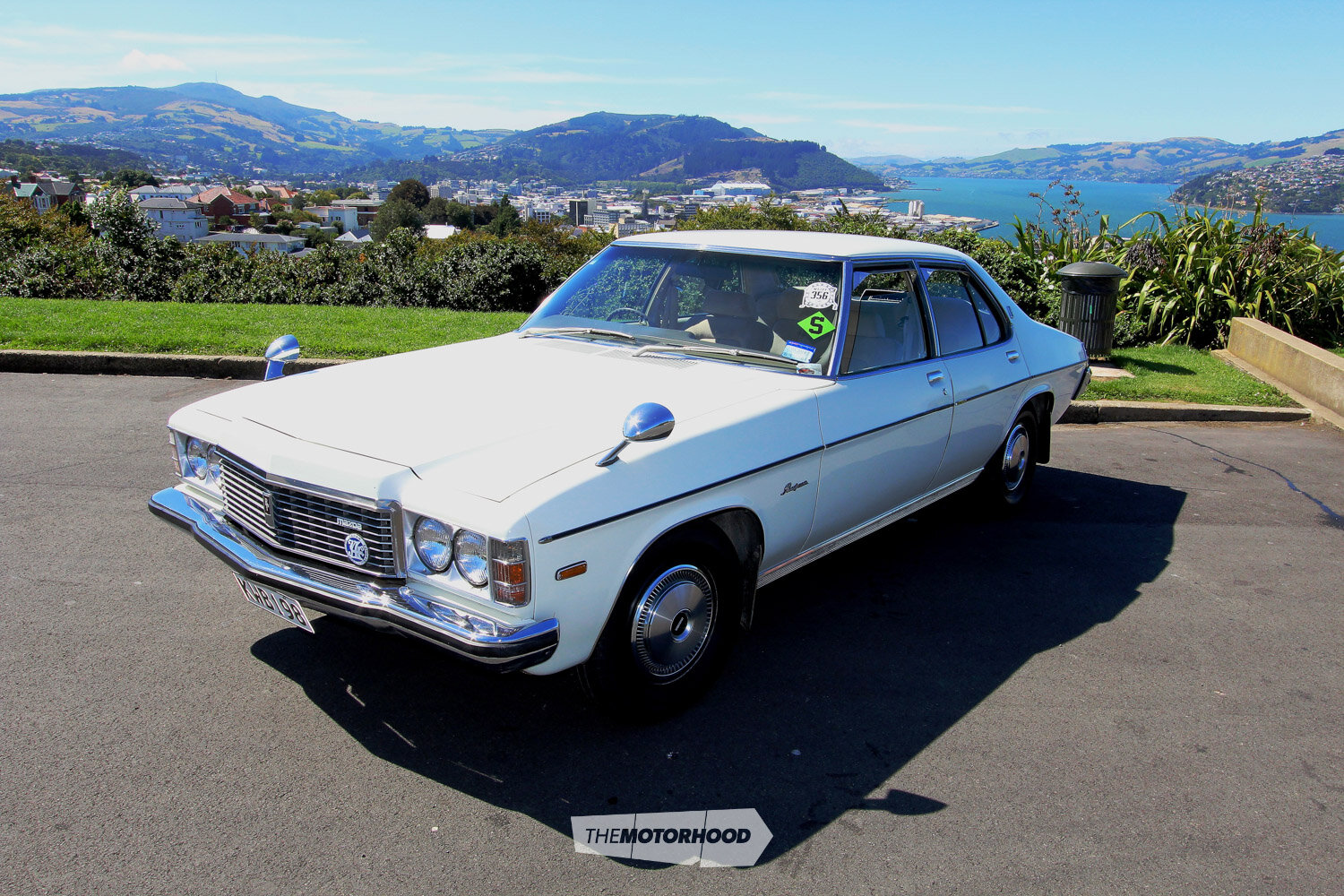
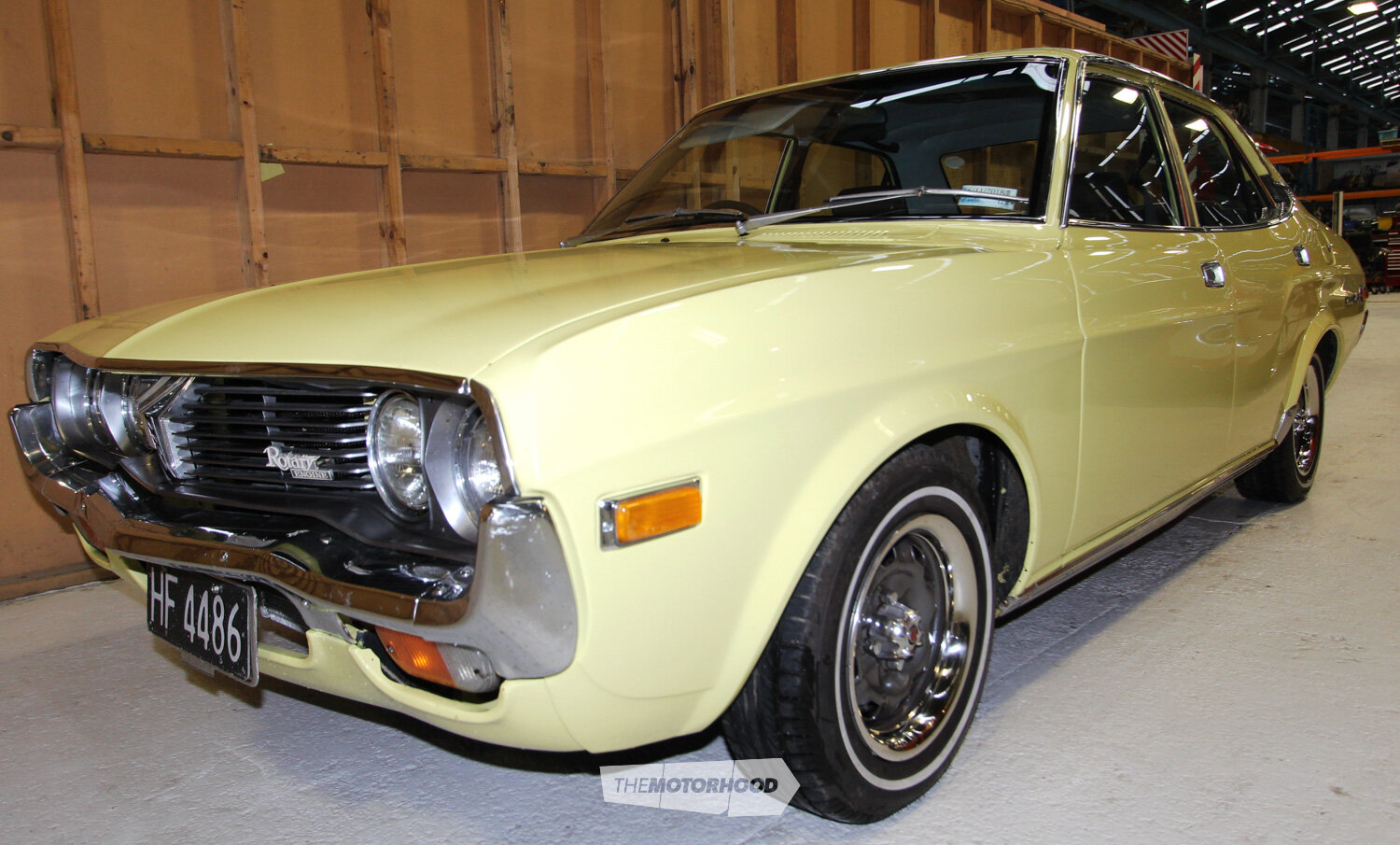
Harbour cruise
The day I called to see the finished car — complete with registration and VIN all done — was also a rare opportunity for its owner to drive it. We headed out around Dunedin Harbour through Macandrew Bay. It was a tight squeeze for both of us in the little Mazda’s cockpit, and the narrow and winding Dunedin harbour road offered a great showcase for the Mazda’s handling and its satisfying tautness. There is that characteristic rotary buzz, and the overall impression is of a very well looked-after car. Its lively performance demonstrated why these cars have such a devoted following.
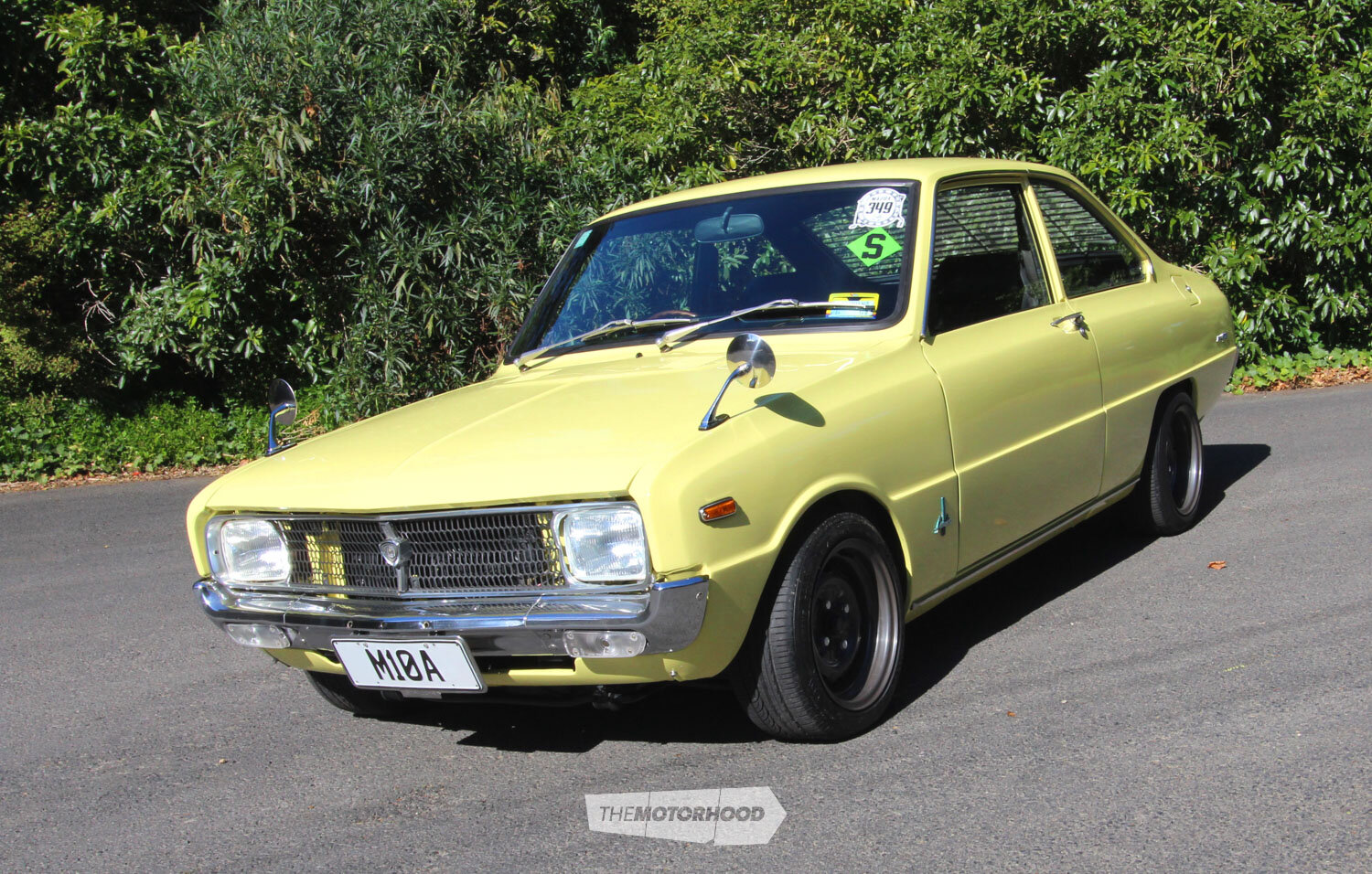
The car was bought in Florida, but it came from Puerto Rico.
“Its owner in Puerto Rico owned one of every colour Mazda RX3-SP — some five or six cars. I believe he was a furniture manufacturing guy or something similar. Puerto Rico has the fastest growing number of rotaries anywhere. It’s bigger than Australia! They are hugely popular there, and the Puerto Ricans are nuts about them. They put rotaries in anything, and they are right into rotaries, especially putting rotaries in Suzuki Samurais [sold as Jimnys in New Zealand]. They love them.”
Destined for display
His intention is to keep the RX3-SP as a display vehicle and not use it on the road.
“I’ve rarely driven the SP, just to Cory’s and back. It’s not really a driver due to its extreme rarity. I almost want to ship it around rather than drive it. I’m the third owner, and it has just 57,000 miles on the speedo. It was in really good condition, but there were just a couple of little bubbles and paint cracks. So, instead of just patching those parts, we decided to paint the whole vehicle. Just the exterior was painted, and everything else is all original in the interior. I’m tempted to do something with the seats, but then it wouldn’t be original, would it?”
With a replacement cost of around $150,000, the RX-3 SP is helping to rise the tide of many other rare Japanese cars.
“We have one example of every RX. We don’t have Cory’s Holden (RoadPacer), or 110 Cosmo, or a RX71, or a couple of other ones. We have an R100, RX-2, 3, 4, 5, RX-7s series I, III, V, VII, and also RX-8s, pre- and post-facelift examples. Half are ready and half are not, so no public display yet. We are just trying to get the cars finished.”
His aim is to get all the cars to the same high standard of presentation, and the current plan is for all of them to be restored at Cory Wilson’s workshop.
“We are trying to show people this is the standard that we are bringing out and these are the vehicles we want to show. That SP is our second-rarest vehicle. We have a rarer one, an RX-2 GS2. There is just one other GS2 Coupe in New Zealand. I’m trying to give Cory a promo to show the standard of work he is doing. He currently has another one of our cars he is working on.”
It’s an impressive collection which he hopes other collectors will support and come on board with, adding to a growing number of displays in the South Island.
Footnote: To complement Transport World’s ‘The Evolution of Japanese Cars’, Invercargill’s Classic Motorcycle Mecca is showing ‘The Evolution of Japanese Motorcycles’, which could even be called a ‘revolution’ such was its profound impact on its British and European rivals. Both exhibitions make Invercargill a top attraction for Kiwis’ motoring-focused holidays at home this summer.
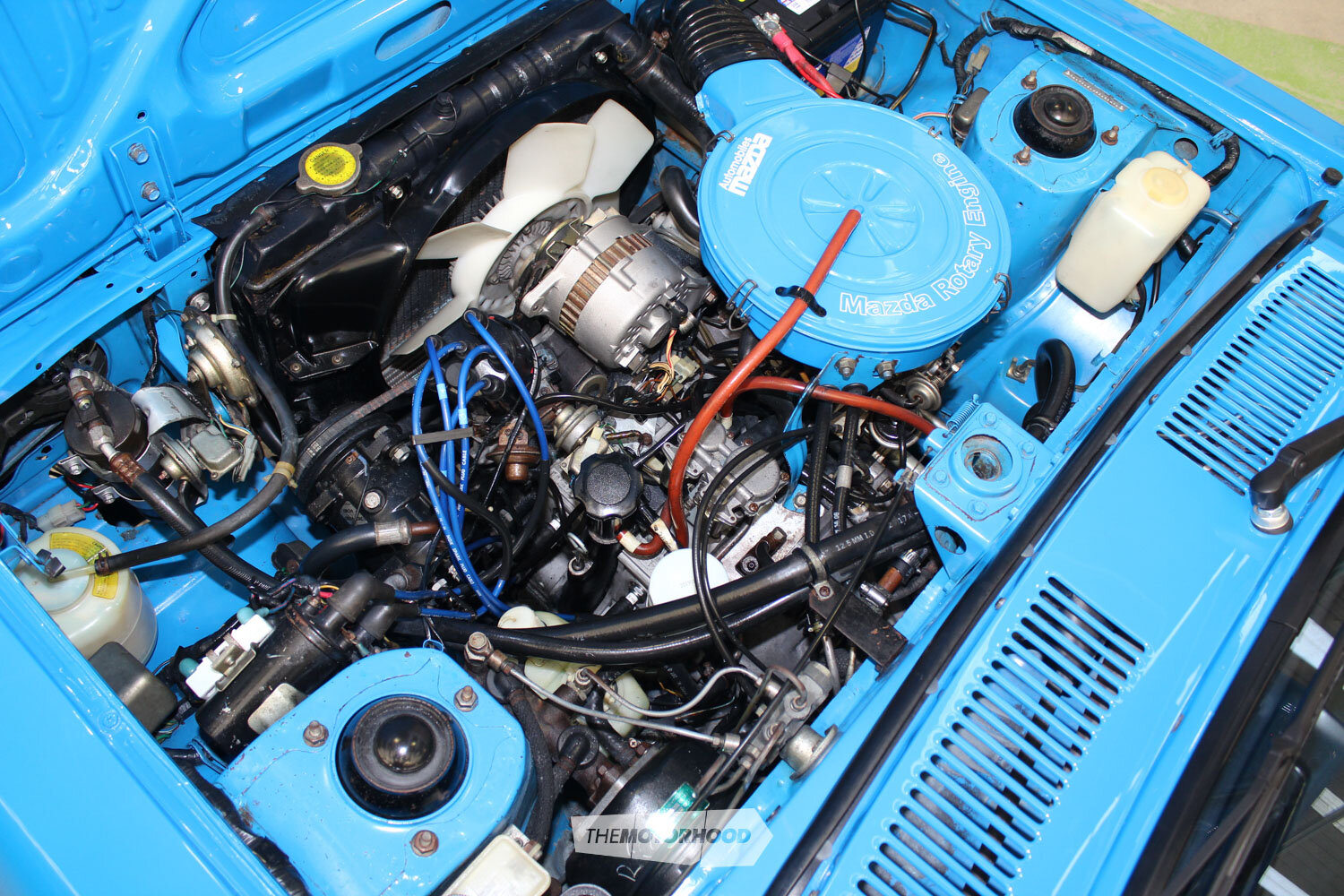
This article originally appeared in New Zealand Classic Car issue No. 360

